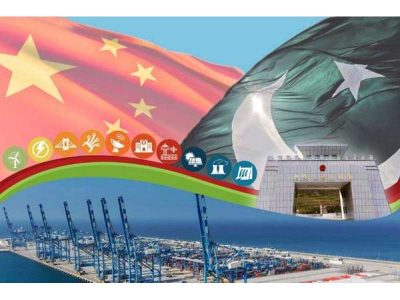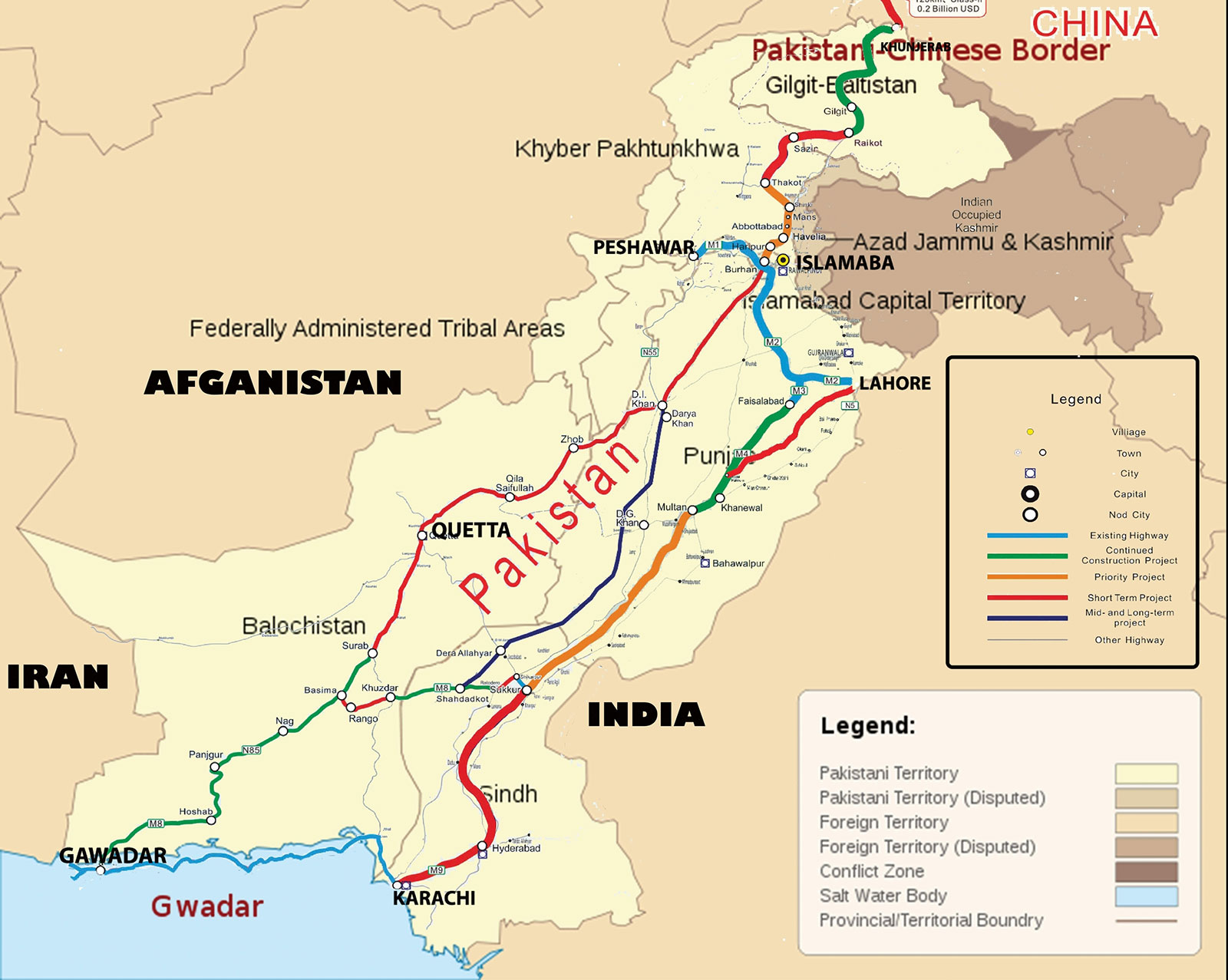The China-Pakistan Economic Corridor (CPEC). Strained Relations with India?

In September 2013, at the Association of Southeast Asian Nations summit, the Chinese President, Xi Jinping, presented his vision and plan for the ‘Belt and Road Initiative’ (BRI) – an ambitious vast complex trade and commercial network for China with the wider world, with a greater mutual flow of, goods, services, capital and people.
Arguably, BRI aims to revive and roll out the ancient Silk Road in the twenty-first century, redraw trade routes for Chinese products, secure access to natural resources from energy rich nations – and radically transform those nations with mega infrastructure projects and investments worth billions of dollars. Although comparable to some degree with the American Marshall Plan and the reconstruction of Western Europe after the Second World War, BRI surpasses it in scale and imagination. Some argue the scope of the initiative is unmatched in history. Recent reports claim the BRI impacts over 90 countries and 4 billion people.
The BRI flagship project of China-Pakistan Economic Corridor (CPEC) – a 3000-kilometer corridor that runs from China’s Kashgar to Pakistan’s deep-water port of Gwadar – provides Pakistan over $60 billion in grants and soft loans worth of investment and on completion will allow China to have access to the Indian Ocean. It will not only open the remote western region of China, Xinjiang, bordering Pakistan, to the rest of the world, it will connect China with the rest of Asia and Europe – by sea to Europe, Africa and other Asian regions and reduce its dependence on shipping via Singapore and the Melaka Straits.
Arguably, Pakistan is integral to the overall success of China’s BRI – and if CPEC fails the full potential of BRI may not materialise. In his brilliant and insightful study, ‘The China-Pakistan Axis’, Andrew Small argues further, “Pakistan is a central part of China’s transition from a regional power to a global one.”
The long-term commitment of both sides from inception to future plans for CPEC is embedded in the strong foundation on which the China and Pakistan relationship already stands.
In 1950, Pakistan was one of the very first countries to recognise the People’s Republic of China. From facilitating US President Nixon’s visit to China in 1972, in turn, re-establishing formal ties between China and the West – to acting as the main conduit to the Islamic world, Pakistan is regarded by China not only as a key strategic partner, but an ‘Iron Brother’. This friendship is cemented by the construction of the grand Karakoram Highway (started in 1959 and completed in 1979) – also known as the ‘China-Pakistan Friendship Highway’ connecting Pakistan with China’s Xinjiang Uyghur Autonomous Region.
Since 1950, Pakistan has collaborated with China in extensive military and economic projects – and CPEC is viewed as the latest of these projects. China has offered Pakistan materials to develop its nuclear arsenal – and today, Pakistan stands as the only Muslim country with nuclear missiles. CPEC has implications for India-Pakistan relations. India perceives CPEC as a direct challenge and threat – an economic initiative disguising the real intentions, which amounts to military co-operation for a potential two front military offensive against India over Kashmir region. It allows China to have easy land access to Pakistan – and that it is less about economic development and more about larger political and strategic goals.
In December 2020, ‘The Hindu’, reported that when the Chinese Foreign Ministry spokesperson was asked at a press conference whether the recent joint air force exercises between China and Pakistan were intended to send a “message to New Delhi”, he told the reporters the drills were part of “routine arrangement” between the two nations. Holding these exercises during a military standoff between Chinese and Indian troops in Ladakh, the concerns are understandable. This recent “routine” joint exercise lasted for 20 days – and according to the Chinese daily newspaper, ‘Global Times’, “air forces from both sides focused on large scale confrontation, including large scale aerial battles and use of forces in mass and close-quarters.”
Some observers argue CPEC is forcing India to rewire its foreign policy objectives, security strategies and trade policies. India’s phenomenal rise as a regional and global economic competitor to China – and with its policies relating to Kashmir – India may have brought China and Pakistan even closer together.
There is a perception held by both China and Pakistan that serious attempts are being made to undermine and derail the CPEC project. Terrorist attacks inside Pakistan have decimated thousands of lives and created instability. In November 2020 the Pakistani newspaper, ‘The Express Tribune’, reported that Pakistani officials had, “unveiled a dossier, containing irrefutable evidence of India’s sponsorship of terrorism in Pakistan” and “India was trying to sabotage CPEC.” India accuses Pakistan of harbouring and supporting terrorists and militants who are responsible for stirring unrest inside Indian controlled Kashmir.
Ongoing accusations and counter-accusations keep the Pakistan-India relations strained and volatile – and China continues to support Pakistan at the highest level. “We are all-weather strategic cooperative partners. In the past 69 years, this relationship has stood the test of the changing international landscape, and has remained firm as a rock,” said China’s Foreign Ministry’s spokesperson, Zhao Lijian, as reported in the Indian newspaper, ‘The Economic Times’, in May 2020.
India may wish CPEC fails – and many news media outlets in India report fall-outs and disagreements between Pakistan and China over CPEC. China maintains relations with Pakistan are going from strength to strength. The new Chinese Ambassador to Pakistan, Nong Rong, stated recently, “CPEC is a product of vision of two brotherly countries that goes beyond traditional business dealings reflecting decade’s old strong bonds of bilateral cooperation and shared goals with a win-win situation for all.”
The issue of Kashmir is at the heart of most problems between Pakistan and India – and between China and India. The region is divided and controlled by the three nations and Pakistan and India have already engaged in three wars over Kashmir.
Despite the continuous threat of war looming over the Kashmir region – a potential military flashpoint between three nuclear powers – according to many observers CPEC is swiftly moving forward in 2021.
*
Note to readers: please click the share buttons above or below. Forward this article to your email lists. Crosspost on your blog site, internet forums. etc.
Shahbazz Afzal is an independent writer and political activist.
Featured image is from OneWorld


